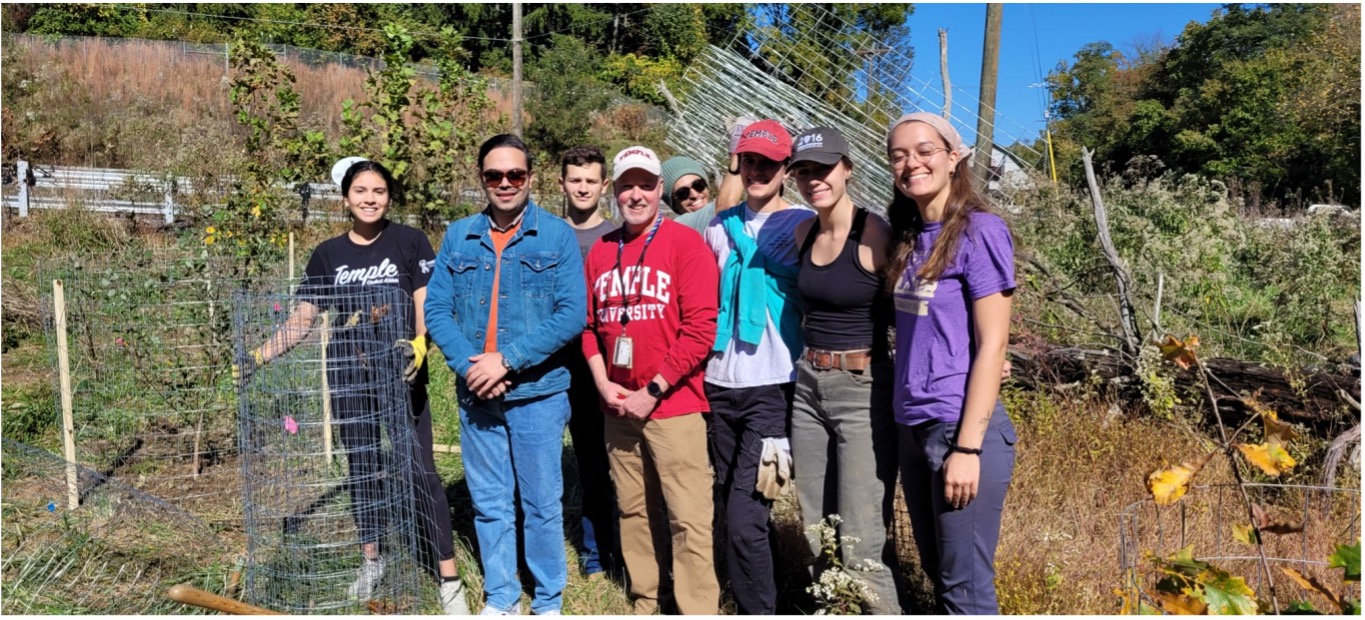The Temple chapters of the American Society of Civil Engineers and Engineers Without Borders tweaked their October Wellness Day experience, dedicating their time to environmental fieldwork.
The crew replanted more than 50 trees along a tributary of the West Branch of Chester Creek after the area was clear-cut of trees during a PennDOT expansion project on U.S. Route 322. Student volunteers, like civil engineering major and co-president of Temple ASCE Caroline Merrill, dug holes, planted trees and added cages to protect them from wildlife.
“I participated because I knew it would fulfill what a ‘wellness day’ means to me,” Merrill said. “Being out in nature, surrounded by people with the shared goal of giving back to the earth was not only a great break from my typical routine but also a rewarding experience.”
Staff from Newlin Grist Mill, a historical park in Glen Mills, organized the event to help improve water quality and support aquatic life along the watershed.
“The clearcutting allowed silt to enter the creek and fill in the nearby ponds and millrace. It also caused water temperatures to increase, which is harmful to the park's cold water-loving trout and freshwater mussels,” explained Merrill.
Replacing the trees will help combat the various environmental stressors impacting the watershed by helping to lower the water temperature with shade and filtering pollutant-filled runoff.
Kevin Magerr, a professor and environmental engineer on the Board of Directors for Newlin Grist Mill, invited the students to help with the repair work on the first of three planting days.
The group exceeded their tree-planting goal by nearly 50 percent, with 52 trees planted, shortening the project by a full day–a resounding success, according to Jessica Shahan, Newlin Grist Mill’s naturalist and tree planting coordinator.
“I feel great about how successful the event was and happy that we were able to assist the Newlon Grist Mill staff in streamlining their efforts,” Merrill added.
Planting trees by the watershed also brings additional benefits to the area. Leaf litter from the newly planted trees will feed aquatic insects which then feed fish. Also, branches and fallen trees that fall into the watershed’s streams can help create more natural complex habitats for aquatic wildlife.
Merrill hopes that the work that she and her fellow students put in on Temple’s Wellness Day pays off in restoring the wellness of the environment following the damaging effects of construction. It was her first time participating in a tree-planting event, but likely not her last.

